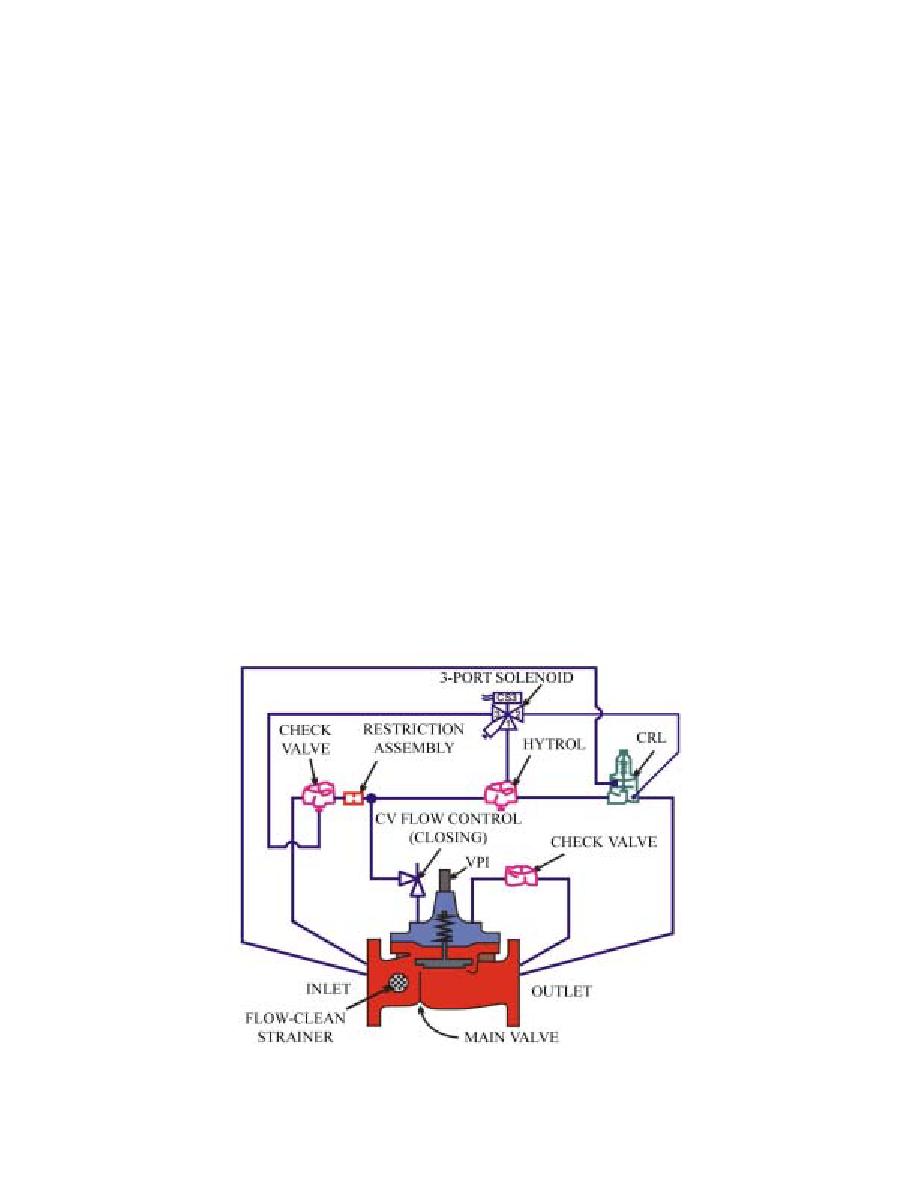
UFC 3-460-03
21 JANUARY 2003
control adjusting stem clockwise to make the valve open slower and counterclockwise to make the
valve open faster. Most valves are set for about 20 seconds; however, to dampen the nozzle
pressure wave, the opening speed may need to be retarded. NOTE: An HCV is also located at the
HSV check-out stand.
6.4.12. HSV. The Brooks valve on the HSV serves as a secondary CRL if the nozzle pressure
reaches 55 psi. The air pressure setting on the HSV dictates the set point of the Brooks valve. The
air pressure must be set 10 psi above the pressure relief setting required by the Brooks valve. Setting
the air pressure at 65 psi will close the Brooks valve at 55 psi. The HCV will close within five
seconds if a pneumatic hose ruptures and bleeds air from the system. For newer HSVs, the pressure-
setting procedures may be different; refer to the manufacturer's instructions. The HCV is equipped
with an API adapter (364AF-2).
6.4.13. Return Venturi. The 101-millimeter return venturi is upstream of the back-pressure control
valve (BPCV). It is similar to the issue venturi but is rated at 3028 liters per minute
(800 gallons per minute).
6.4.14. BPCV (58AF-9):
6.4.14.1. The BPCV (Figure 6.7) set point is 100 psi, measured at the inlet of the furthest hydrant
outlet. It modulates to maintain loop pressure at the set point. The valve also prevents reverse
flow. This 152-millimeter valve has a solenoid that is energized when the lead pump is called on
and is de-energized when the system starts the shut-down sequence. When the solenoid is
energized the valve is enabled, meaning the valve opens and closes as the CRL dictates. When it
is de-energized the valve closes.
Figure 6.7. BPCV (58AF-9).
6.4.14.2. Valve Setting. Place a person at the furthest hydrant outlet with a means of
communicating with the person at the BPCV. To establish 100 psi at the furthest hydrant outlet,
61


 Previous Page
Previous Page
